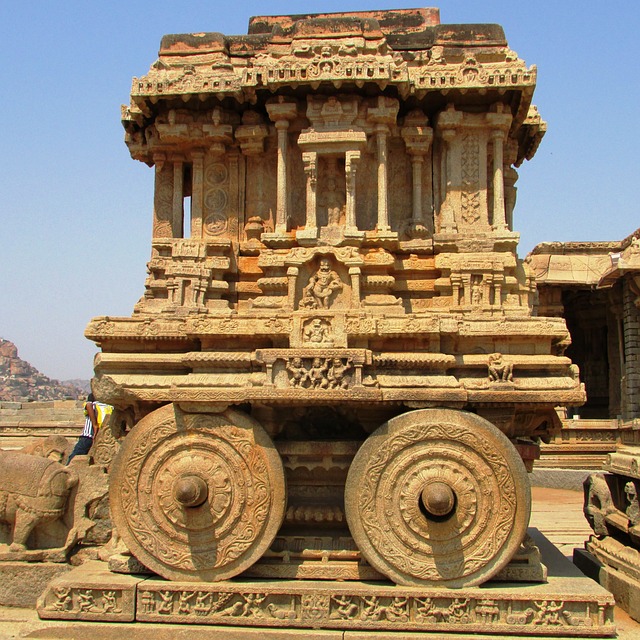Tourism has always been a fascinating way to experience different cultures, landscapes, and historical sites. However, with the advent of technology, virtual tourism has emerged as a compelling alternative for travelers, especially during times of travel restrictions. This article delves into the concept of virtual tourism, its growing popularity, and how it offers a unique opportunity to explore India’s diverse tourist destinations from the comfort of one’s home.
1. The Rise of Virtual Tourism
Virtual tourism has gained prominence as a result of advancements in technology and internet connectivity.
- a. Virtual Reality (VR): VR technology allows users to experience immersive, 360-degree views of destinations.
- b. Augmented Reality (AR): AR enhances real-world experiences by overlaying virtual elements onto physical environments.
2. The Appeal of Virtual Tourism in India
Virtual tourism offers several advantages that appeal to travelers, especially those with constraints on physical travel.
- a. Accessibility: Virtual tourism allows access to remote or restricted areas that may be challenging to visit in person.
- b. Cost-Effective: It eliminates travel expenses, making it a budget-friendly option for exploring tourist destinations.
3. Exploring India’s Cultural Heritage Virtually
India’s rich cultural heritage and historical sites make it an ideal destination for virtual tourism.
- a. UNESCO World Heritage Sites: Virtual tours showcase India’s iconic sites, such as the Taj Mahal and Qutub Minar.
- b. Museums and Galleries: Online exhibits offer a glimpse of India’s art and cultural treasures.
4. Virtual Wildlife Safaris
Virtual tourism provides a unique opportunity to explore India’s wildlife and natural wonders.
- a. National Parks and Sanctuaries: Virtual wildlife safaris offer a close encounter with India’s diverse flora and fauna.
- b. Environmental Education: Virtual tours promote awareness and conservation of India’s natural habitats.

5. Spiritual Journeys from Home
India’s spiritual heritage and religious sites can be explored virtually.
- a. Temples and Pilgrimage Sites: Virtual tours take visitors to famous temples and pilgrimage destinations.
- b. Yoga and Meditation: Online sessions provide a glimpse into India’s ancient practices of yoga and meditation.
6. Cultural Festivals and Celebrations
Virtual tourism allows participation in India’s vibrant cultural festivals and celebrations.
- a. Diwali: Experience the Festival of Lights virtually and witness its colorful festivities.
- b. Holi: Explore the joyous celebration of colors and cultural traditions of Holi.
7. Virtual Culinary Experiences
Virtual tourism extends to India’s diverse culinary landscape.
- a. Cooking Demonstrations: Virtual cooking classes introduce Indian cuisine and recipes.
- b. Food Tours: Virtual food tours take visitors on a gastronomic journey through India’s culinary hotspots.This post is sponsored by our partners Wigs
8. Interactive and Engaging Virtual Experiences
Virtual tourism goes beyond passive observation, offering interactive and engaging experiences.
- a. Live Virtual Guided Tours: Expert guides lead interactive tours, answering questions in real-time.
- b. Virtual Workshops: Participate in online workshops, learning traditional arts and crafts from India.
9. Embracing Sustainable and Responsible Tourism
Virtual tourism aligns with the principles of sustainable and responsible tourism.
- a. Carbon Footprint: It reduces travel-related carbon emissions and promotes eco-friendly practices.
- b. Cultural Preservation: Virtual tourism raises awareness of the importance of preserving cultural heritage.
10. The Future of Virtual Tourism

The future of virtual tourism in India is promising, with continuous technological advancements.
- a. Virtual Reality Advancements: VR technology will become more immersive and accessible.
- b. Remote Virtual Experiences: Explore remote destinations virtually through advanced technologies.
11. Complementing Physical Travel
Virtual tourism complements physical travel experiences rather than replacing them.
- a. Pre-Travel Research: Virtual tours help travelers plan their itineraries and choose destinations.
- b. Enhancing Travel Memories: Virtual tourism allows travelers to revisit destinations and share experiences.
12. Challenges and Opportunities
While virtual tourism offers numerous benefits, some challenges and opportunities need to be considered.
- a. Internet Connectivity: Ensuring reliable internet connectivity for a seamless virtual experience.
- b. Monetization and Copyright: Navigating copyright issues and monetizing virtual tourism offerings.
Conclusion
Virtual tourism has opened up new possibilities for travelers to explore India’s tourist destinations from the comfort of their homes. With immersive technologies like VR and AR, travelers can experience the cultural heritage, wildlife, and culinary delights of India without physical travel. As virtual tourism continues to evolve, it will complement physical travel experiences and offer a sustainable and accessible way to explore the world. Whether planning future trips or simply satisfying wanderlust, virtual tourism allows travelers to immerse themselves in India’s diverse and fascinating destinations, fostering a deeper appreciation for its rich cultural heritage and natural wonders.